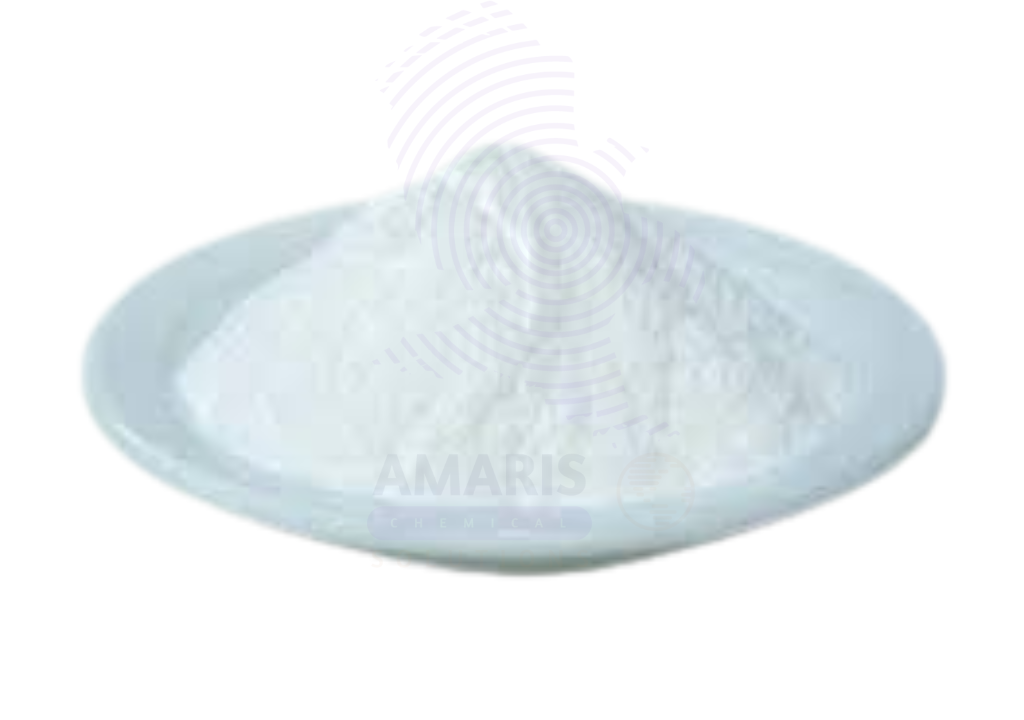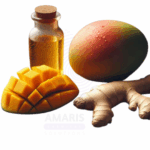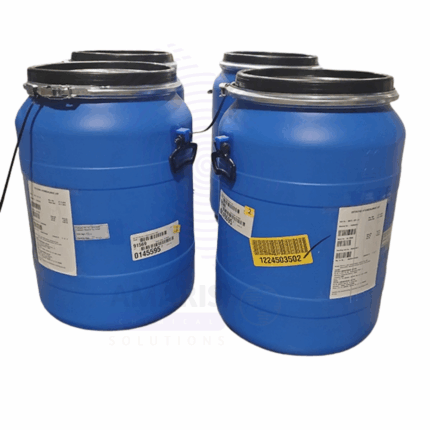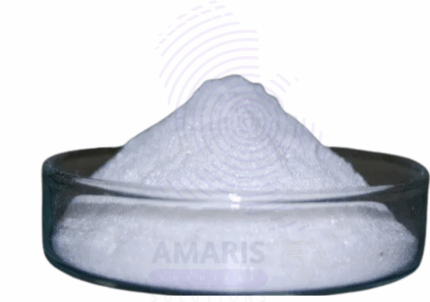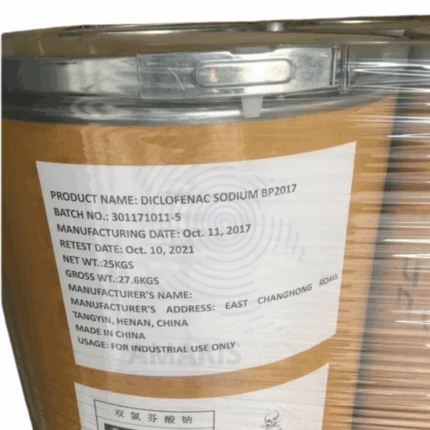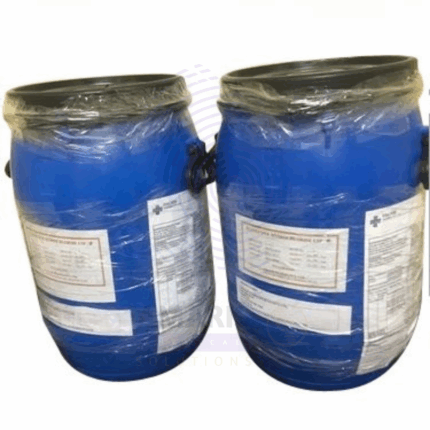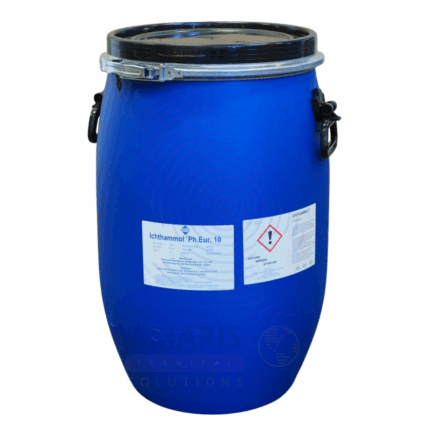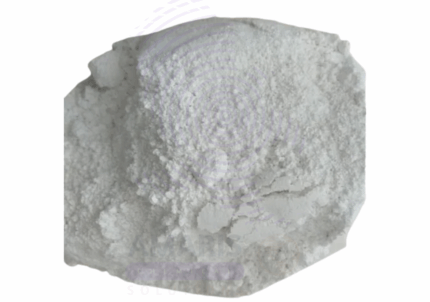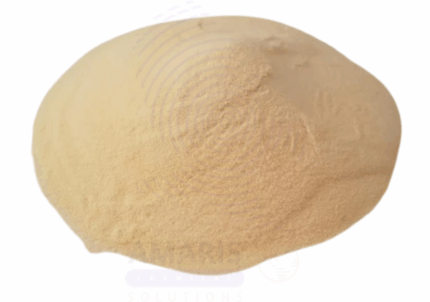Vitamin K3
Vitamin K3, chemically known as Menadione, is a synthetic, fat-soluble vitamin used primarily in animal nutrition and some pharmaceutical applications. Unlike Vitamins K1 and K2, Vitamin K3 does not occur naturally but is a stable precursor that the body (or animal body) can convert into active forms of Vitamin K. It plays a critical role in blood clotting, bone metabolism, and cellular health. Vitamin K3 is usually available as Menadione Sodium Bisulfite (MSB) or Menadione Nicotinamide Bisulfite (MNB) for enhanced solubility and stability.
Vitamin K3
Primary Uses
- Animal Nutrition
- Poultry Feed: Promotes proper blood clotting, bone development, and overall growth.
- Livestock & Aquaculture Feed: Ensures skeletal strength and reduces hemorrhagic disorders in swine, cattle, and fish.
- Pet Food Supplements: Supports coagulation and general health in dogs, cats, and exotic pets.
- Premix & Fortified Feed: Commonly included in vitamin-mineral premixes for commercial animal diets.
- Veterinary Pharmaceuticals
- Injectables & Oral Preparations: Used in veterinary medicines to treat Vitamin K deficiency or bleeding disorders.
- Hatchery Support: Employed in early-stage chick or fish nutrition to prevent hemorrhagic syndromes.
- Nutritional & Clinical Research
- Nutritional Studies: Used in laboratory animal diets for controlled experiments involving Vitamin K pathways.
- Biological Assays: Applied as a reference substance for testing vitamin interactions and functions.
Secondary Uses
- Industrial & Pharmaceutical Synthesis
- Intermediate in Drug Synthesis: Occasionally used in the production of other Vitamin K analogues.
- Research Reagent: Applied in oxidative stress studies and cell signaling research.
1. Basic Identification Attributes
- Chemical Name (IUPAC): 2-Methyl-1,4-naphthoquinone
- Common/Trade Name: Vitamin K3, Menadione
- CAS Number: 58-27-5
- HS Code: 2936.29.00
- Synonyms: Menadione, Menaphthone, Vitamin K3 MSB/MNB
2. Physical & Chemical Properties
- Physical State: Crystalline powder or fine granules
- Color & Odor: Yellow to orange; characteristic odor
- Solubility: Slightly soluble in water (pure form); soluble as MSB or MNB salts
- Melting Point: ~105–107 °C
- Molecular Formula: C11H8O2 (base compound)
- Molecular Weight: 172.18 g/mol (base compound)
- Stability: Stable under dry, dark conditions; light- and heat-sensitive in solution
3. Safety & Hazard Attributes
- GHS Classification: May cause skin irritation, eye irritation, and respiratory irritation
- Toxicity: Can be toxic at high doses, especially in humans; strictly regulated in human use
- LD50 (oral, rat): ~230 mg/kg (Menadione)
- Irritant Potential: Can irritate skin, eyes, and mucous membranes
4. Storage & Handling Attributes
- Storage Conditions: Store in tightly sealed containers in a cool, dry, and dark environment
- Container Type: Double-layered polyethylene bags within fiber drums
- Shelf Life: 24 months when stored properly
- Handling Precautions: Avoid generating dust; handle with appropriate protective gear
5. Regulatory & Compliance Attributes
- Approved for Animal Feed Use: Widely accepted in poultry, swine, aquaculture, and ruminant nutrition
- Not Approved for Human Use: Banned or restricted in human dietary supplements in many countries
- Complies with: Feed-grade standards in line with EU, USDA, and Chinese feed regulations
- Manufacturing Standards: GMP and ISO 9001-compliant facilities for feed-grade and veterinary use
6. Environmental & Health Impact
- Biodegradability: Degrades in soil and water under aerobic conditions
- Ecotoxicity: Low aquatic toxicity at regulated levels
- Bioaccumulation: Low risk when used as intended in animal feed
Safety Handling Precautions
- PPE Required: Gloves, lab coat, dust mask, and goggles
- Handling Guidelines: Use local ventilation when handling powders; avoid contact with eyes and skin
- Storage Measures: Keep sealed and protected from light and moisture
First Aid Measures
- Inhalation: Move to fresh air; seek medical attention if symptoms persist
- Skin Contact: Wash thoroughly with soap and water
- Eye Contact: Rinse with water for several minutes; seek help if irritation continues
- Ingestion: Rinse mouth; seek medical attention if large amounts are swallowed
Firefighting Measures
- Fire Hazards: Combustible dust
- Extinguishing Media: Use dry chemical, foam, or carbon dioxide
- Hazardous Combustion Products: Carbon oxides and toxic fumes under fire conditions
Related products
Cetirizine Dihydrochloride
Cetirizine Hydrochloride
Diclofenac Sodium BP
Dicyclomine Hydrochloride
Ichthammol BP98
Mebendazole USP ( Micronized white)
Miconazole Nitrate BP
Miconazole Nitrate BP is a high-purity, pharmaceutical-grade antifungal agent conforming to British Pharmacopoeia (BP) specifications. It is widely used in the formulation of topical and oral pharmaceutical products for the treatment of fungal infections caused by dermatophytes and yeasts, including Candida species. Miconazole Nitrate functions by inhibiting the biosynthesis of ergosterol, a vital component of fungal cell membranes, leading to cell death.
This white to off-white crystalline powder is highly effective and exhibits broad-spectrum antifungal and some antibacterial activity. It is commonly utilized in creams, ointments, powders, and gel formulations.


 Preservatives(food)
Preservatives(food) Flavor Enhancers
Flavor Enhancers Acidulants
Acidulants Sweeteners
Sweeteners Antioxidants
Antioxidants Colorants(food)
Colorants(food) Nutraceutical Ingredients (food)
Nutraceutical Ingredients (food) Nutrient Supplements
Nutrient Supplements Emulsifiers
Emulsifiers
 Collectors
Collectors Dust Suppressants
Dust Suppressants Explosives and Blasting Agents
Explosives and Blasting Agents Flocculants and Coagulants
Flocculants and Coagulants Frothers
Frothers Leaching Agents
Leaching Agents pH Modifiers
pH Modifiers Precious Metal Extraction Agents
Precious Metal Extraction Agents
 Antioxidants(plastic)
Antioxidants(plastic) Colorants (Pigments, Dyes)
Colorants (Pigments, Dyes) Fillers and Reinforcements
Fillers and Reinforcements Flame Retardants
Flame Retardants Monomers
Monomers Plasticizers
Plasticizers Polymerization Initiators
Polymerization Initiators Stabilizers (UV, Heat)
Stabilizers (UV, Heat)
 Antifoaming Agents
Antifoaming Agents Chelating Agents
Chelating Agents Coagulants and Flocculants
Coagulants and Flocculants Corrosion Inhibitors
Corrosion Inhibitors Disinfectants and Biocides
Disinfectants and Biocides Oxidizing Agents
Oxidizing Agents pH Adjusters
pH Adjusters Scale Inhibitors( water)
Scale Inhibitors( water)
 Antioxidants(cosmetic)
Antioxidants(cosmetic) Emollients
Emollients Fragrances and Essential Oils
Fragrances and Essential Oils Humectants
Humectants Preservatives
Preservatives Surfactants(cosmetic)
Surfactants(cosmetic) Thickeners
Thickeners UV Filters
UV Filters
 Fertilizers
Fertilizers Soil Conditioners
Soil Conditioners Plant Growth Regulators
Plant Growth Regulators Animal Feed Additives
Animal Feed Additives Biostimulants
Biostimulants Pesticides (Herbicides, Insecticides, Fungicides)
Pesticides (Herbicides, Insecticides, Fungicides)
 Active Pharmaceutical Ingredients (APIs)
Active Pharmaceutical Ingredients (APIs) Excipients
Excipients Solvents(pharmaceutical)
Solvents(pharmaceutical) Antibiotics
Antibiotics Antiseptics and Disinfectants
Antiseptics and Disinfectants Vaccine Adjuvants
Vaccine Adjuvants Nutraceutical Ingredients (pharmaceutical)
Nutraceutical Ingredients (pharmaceutical) Analgesics & Antipyretics
Analgesics & Antipyretics
 Analytical Reagents
Analytical Reagents Solvents(lab)
Solvents(lab) Chromatography Chemicals
Chromatography Chemicals Spectroscopy Reagents
Spectroscopy Reagents microbiology-and-cell-culture-reagents
microbiology-and-cell-culture-reagents Molecular Biology Reagents
Molecular Biology Reagents Biochemical Reagents
Biochemical Reagents Inorganic and Organic Standards
Inorganic and Organic Standards Laboratory Safety Chemicals
Laboratory Safety Chemicals Specialty Laboratory Chemicals(Special Laboratory Equipment)
Specialty Laboratory Chemicals(Special Laboratory Equipment)
 Demulsifiers
Demulsifiers Hydraulic Fracturing Fluids
Hydraulic Fracturing Fluids Scale Inhibitors(oil)
Scale Inhibitors(oil) Surfactants(oil)
Surfactants(oil) Drilling Fluids
Drilling Fluids
 Dyes and Pigments
Dyes and Pigments Bleaching Agents
Bleaching Agents Softening Agents
Softening Agents Finishing Agents
Finishing Agents Antistatic Agents
Antistatic Agents
 Admixtures
Admixtures Waterproofing Agents
Waterproofing Agents Sealants and Adhesives
Sealants and Adhesives Curing Compounds
Curing Compounds Concrete Repair Chemicals
Concrete Repair Chemicals Anti-Corrosion Coatings
Anti-Corrosion Coatings
 Surfactants(cleaning)
Surfactants(cleaning) Builders
Builders Enzymes
Enzymes Solvents (Cleaning)
Solvents (Cleaning) Fragrances
Fragrances
 Electronic Chemicals
Electronic Chemicals Catalysts
Catalysts Lubricants
Lubricants Photographic Chemicals
Photographic Chemicals Refrigerants
Refrigerants Automotive chemicals
Automotive chemicals Pyrotechnic Chemicals
Pyrotechnic Chemicals
 Biodegradable Surfactants
Biodegradable Surfactants Bio-based Solvents
Bio-based Solvents Renewable Polymers
Renewable Polymers Carbon Capture Chemicals
Carbon Capture Chemicals Wastewater Treatment Chemicals
Wastewater Treatment Chemicals
 Pigments
Pigments Solvents(paint)
Solvents(paint) Specialty Coatings
Specialty Coatings Binders/Resins
Binders/Resins Additives
Additives Driers
Driers Anti-Corrosion Agents
Anti-Corrosion Agents Functional Coatings
Functional Coatings Application-Specific Coatings
Application-Specific Coatings
 Fresh Herbs
Fresh Herbs Ground Spices
Ground Spices Whole Spices
Whole Spices Spice Blends
Spice Blends Dried Herbs
Dried Herbs
 Leavening Agents
Leavening Agents Dough Conditioners
Dough Conditioners Flour Treatments
Flour Treatments Fat Replacers
Fat Replacers Decoratives
Decoratives Preservatives(baking)
Preservatives(baking)
 Plasticizers & Softeners
Plasticizers & Softeners Reinforcing Agents
Reinforcing Agents Adhesion Promoters
Adhesion Promoters Vulcanizing Agents
Vulcanizing Agents Antidegradants
Antidegradants Blowing Agents
Blowing Agents Fillers & Extenders
Fillers & Extenders Accelerators & Retarders
Accelerators & Retarders